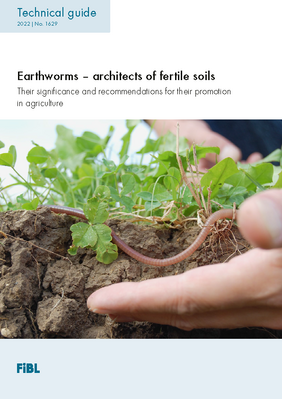This extended guide summarises the current knowledge on earthworms. It gives an overview of the biology, ecology and the multiple services of earthworms to agriculture. Furthermore, it provides recommendations for the conservation and promotion of these extraordinary organisms in agricultural soils.
Earthworms are usually the most abundant soil animals in agricultural soils. They are known to improve physical, chemical and biological properties of soils. Together with soil microorganisms they have a great potential to enhance soil fertility. However, they still receive little attention in agricultural practice. Only a few farmers actively promote them. Instead, heavy machines, intensive tillage and wide use of pesticides have in many places eliminated or drastically reduced earthworm populations. Especially in the context of sustainable farming systems such as organic farming earthworms should receive more attention. The guide wants to contribute to raise awareness of the issue.
Further information
Contact
Link
fibl.org: Technical guide "Earthworms – Architects of fertile soils"





